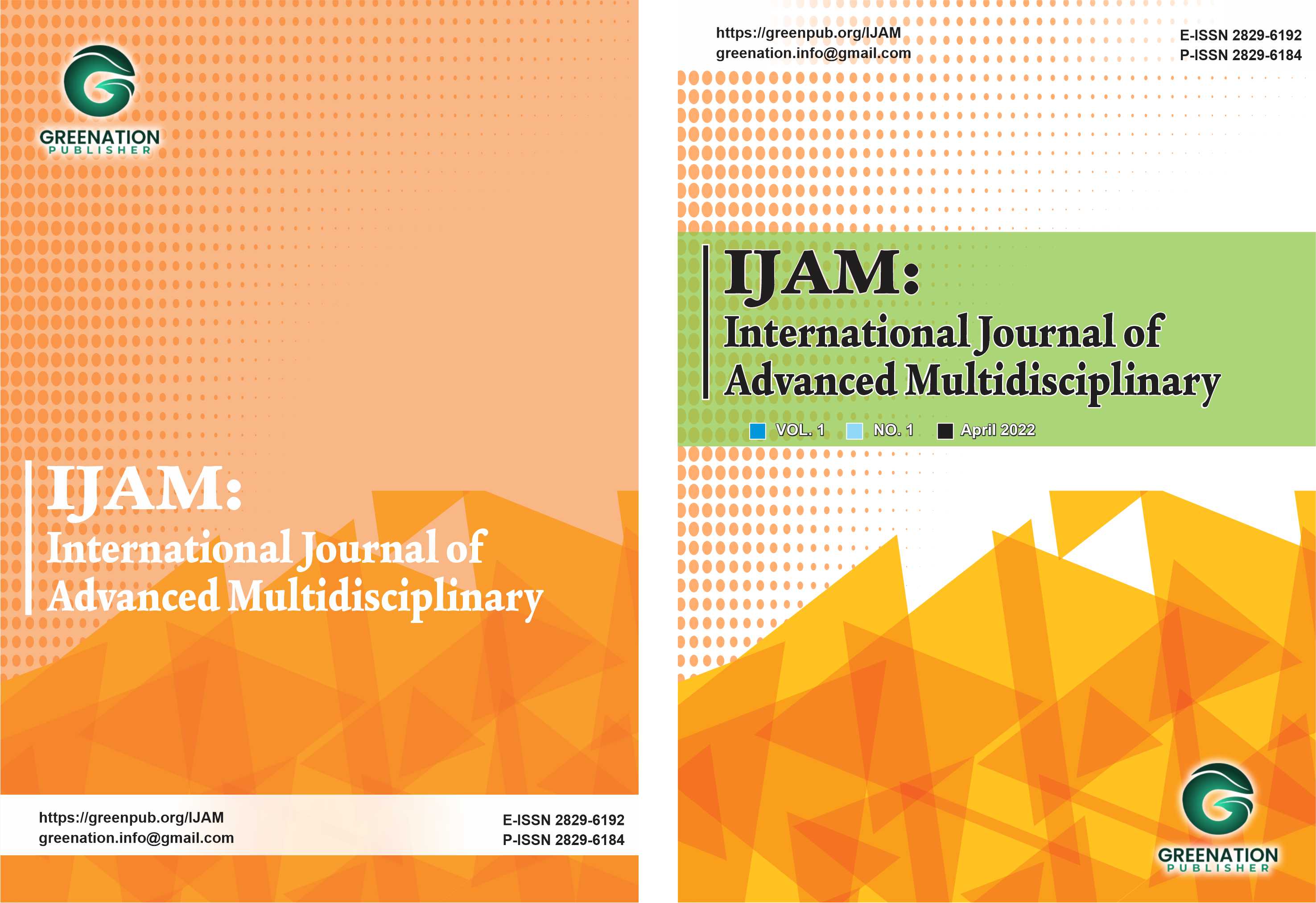Application Design of A Multiple Power Source Monitoring System Based On The Internet Of Things (IOT)
DOI:
https://doi.org/10.38035/ijam.v2i4.457Keywords:
Monitoring, PZEM-004T sensor, Ethernet Shield, Arduino UNO, Internet Of ThingsAbstract
At the present time, technology is developing rapidly in various scientific fields. People continue to develop and research the latest technologies to make human life easier. One of them is in the field of IoT (Internet of Things) technology. The use of electrical devices in each power source has different electrical power consumption. And this often happens, so when using electrical equipment, each power source is a tool for monitoring the use of electrical power, so that the use of electrical power in multiple power sources is in accordance with the required power. Therefore, a tool is designed that can facilitate the performance of activities to monitor the use of electric power, the results of which can be displayed through LCD 16X2 and can be informed through the Internet. The purpose of this research is to design an IoT-based electric power monitoring system to facilitate the monitoring of electric power consumption in multiple IoT-based power sources. The method used in data collection is quantitative method. With the collection of several components needed, which are designed in this study such as voltage sensors, Ethernet shields, hub switches and Arduino Uno microcontrollers. This research will monitor IoT-based power, and can be monitored via the Internet in the form of a graphical display on a desktop application or in the form of a monitoring web page. The results showed that the average error value in testing the voltage sensor was 0.02%, the sensor for current readings had an error value of 0.19%, and the value of power was 0.18%. So it can be concluded that by having a fairly small difference and error, this tool is said to be quite good and then by testing the monitoring application system on the web page that is made capable of sending, storing and displaying data on the monitoring web page in real time every minute even with different power sources, in tests conducted with two different power sources and can be measured properly, so that testing the web monitoring application can be said to be good because it can monitor electrical power of multiple power sources.
References
Purwania Ida Bagus Gede, Satya Kumara I Nyoman, and Sudarma Made, “Application of IoT-Based System for Monitoring Energy Consumption,” International Journal of Engineering and Emerging Technology, vol. 5, pp. 81–93, 2020.
I. S. Hudan and T. Rijianto, “Rancang Bangun Sistem Monitoring Daya Listrik Pada Kamar Kos Berbasis Internet of Things Rancang Bangun Sistem Monitoring Daya Listrik Pada Kamar Kos Berbasis Internet Of Things (Iot),” 2018. Doi : https://doi.org/10.26740/jte.v8n1.p%25p.
E. Kurniawan, D. S. Pangaudi, D. Eko, N. Widjatmoko, and P. P. Surabaya, “CYCLOTRON?: Jurnal Teknik Elektro Perancangan Sistem Monitoring Konsumsi Daya Listrik Berbasis Android,” 2022.
J. Lianda, D. Handarly, and A. Adam, “Sistem Monitoring Konsumsi Daya Listrik Jarak Jauh Berbasis Internet of Things,” JTERA (Jurnal Teknologi Rekayasa), vol. 4, no. 1, p. 79, May 2019, doi: 10.31544/jtera.v4.i1.2019.79-84.
T. D. Hendrawati, Y. D. Wicaksono, and E. Andika, “Internet of Things: Sistem Kontrol-Monitoring Daya Perangkat Elektronika,” JTERA (Jurnal Teknologi Rekayasa), vol. 3, no. 2, p. 177, Dec. 2018, doi: 10.31544/jtera.v3.i2.2018.177-184.
J. Lianda, D. Handarly, and A. Adam, “Sistem Monitoring Konsumsi Daya Listrik Jarak Jauh Berbasis Internet of Things,” JTERA (Jurnal Teknologi Rekayasa), vol. 4, no. 1, p. 79, May 2019, doi: 10.31544/jtera.v4.i1.2019.79-84.
D. H. Manik, R. Nandika, and P. Gunoto, “Penerapan Internet Of Things (Iot) Pada Sistem Monitoring Pemakaian Daya Listrik Rumah Tangga Berbasis Mikrokontroler Dan Website,” Sigma TeknikA, Vol. 4, No. 2, Pp. 255–261, Nov. 2021, Doi: 10.33373/Sigmateknika.V4i2.3618.
K. Luechaphonthara and V. A, “IOT based application for monitoring electricity power consumption in home appliances,” International Journal of Electrical and Computer Engineering (IJECE), vol. 9, no. 6, p. 4988, Dec. 2019, doi: 10.11591/ijece.v9i6.pp4988-4992.
A. M. Syaiful Romadhon, “Design and Development of Real-Time Monitoring & Controlling Infant Incubator with Tilt Stabilizer Using Raspberry Pi Remotely Controlled via PC and Smartphone to Reduce Tilt during Baby Transfer,” International Journal of Advanced Multidisciplinary, vol. 2, no. 2, pp. 1–12, 2022.
Z. Kuroma, N. Dwi Saputro, G. Pusat Lantai, and J. Sidodadi Timur, Perancangan Aplikasi Monitoring Jurnal Kegiatan Badan Pusat Statistik Kota Pekalongan Berbasis Web, Vol. 6. 2021.
Downloads
Published
How to Cite
Issue
Section
License
Copyright (c) 2024 Mujiburohman, Abdul Multi, Kun Wardana

This work is licensed under a Creative Commons Attribution 4.0 International License.
Authors who publish their manuscripts in this journal agree to the following conditions:
- The copyright on each article belongs to the author(s).
- The author acknowledges that the International Journal of Advanced Multidisciplinary (IJAM) has the right to be the first to publish with a Creative Commons Attribution 4.0 International license (Attribution 4.0 International (CC BY 4.0).
- Authors can submit articles separately, arrange for the non-exclusive distribution of manuscripts that have been published in this journal into other versions (e.g., sent to the author's institutional repository, publication into books, etc.), by acknowledging that the manuscript has been published for the first time in the International Journal of Advanced Multidisciplinary (IJAM).























